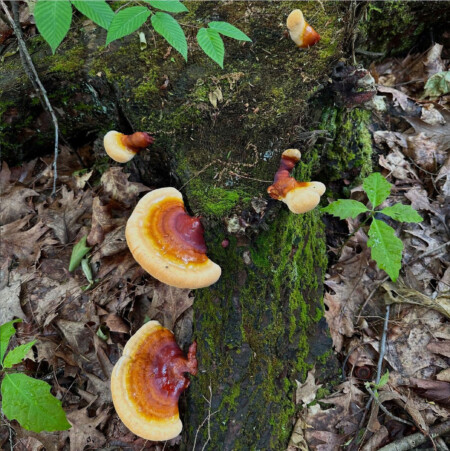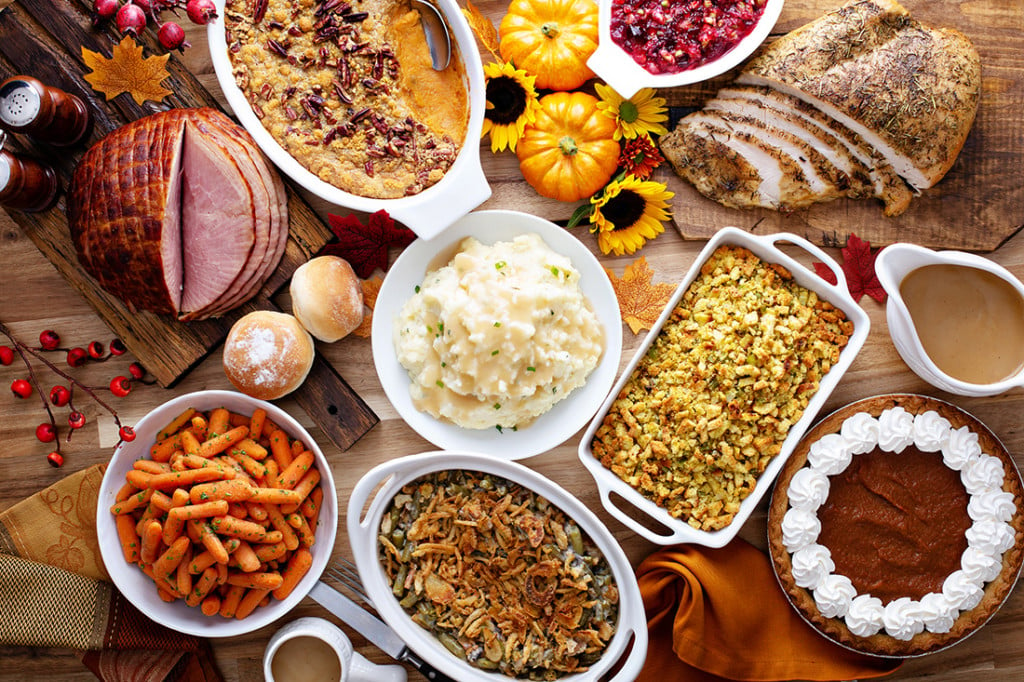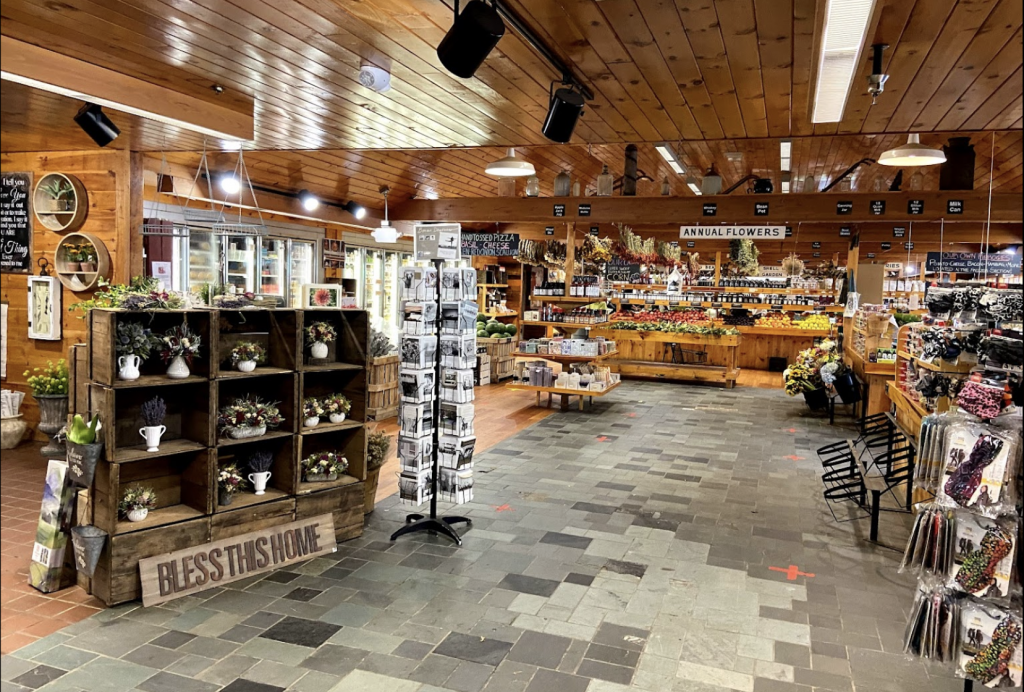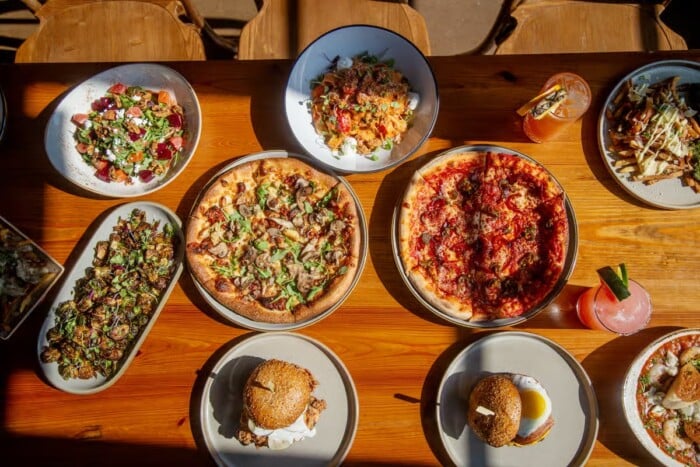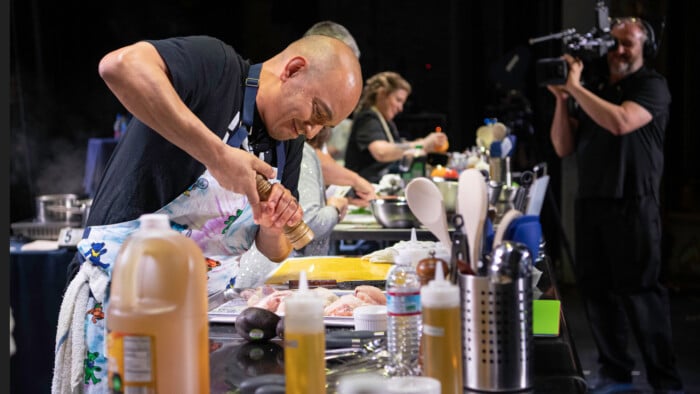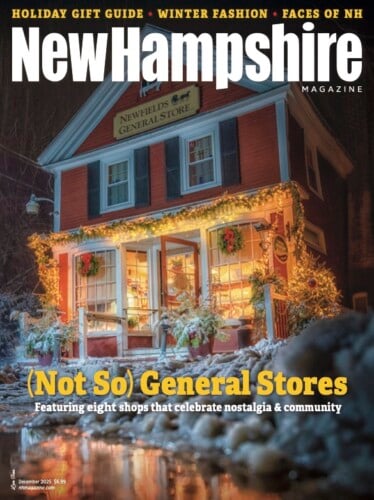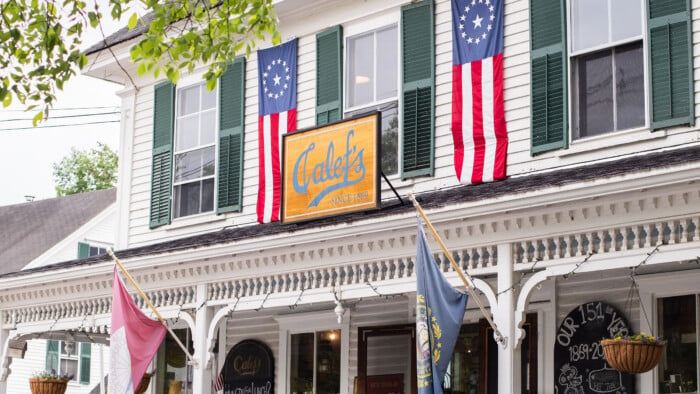Mushrooms are More Than Just Caps and Stems
The many-faceted mushroom is a favorite at New Hampshire farmers’ markets, restaurants and kitchen tables
At the New Hampshire Mushroom Company in Tamworth, a sign propped up against the storefront window advises people to eat more mushrooms.
Inside the remote growing facility, in a bright, windowless room, owner Eric Milligan is harvesting clusters of matured white oyster mushrooms grown from sterilized wood substrate colonized with mycelium — a vast network of tiny, threadlike material that will “fruit” a mushroom in the right conditions.
Minutes after harvest, Milligan slides the tray of oyster mushrooms into a dark walk-in fridge set to a chilly 34 degrees. This makes them go dormant, preserving them for a few days until they’re picked up by farmers’ markets and wholesale clients around New Hampshire and elsewhere.
Milligan, a farm-tech certified forager with a theater, engineering and construction background, says interest in mushrooms has exploded. As the trend toward healthy living continues, the vitamin-packed mushroom has been taking America by storm.
According to Grand View Research, in 2023, the market for mushrooms in the U.S. was around $2.97 billion. That year, Americans gobbled up 4.9 percent of the global market for edible fungi.
And it’s still growing — the India & U.S.-based research firm expects the industry will continue to expand through 2030.
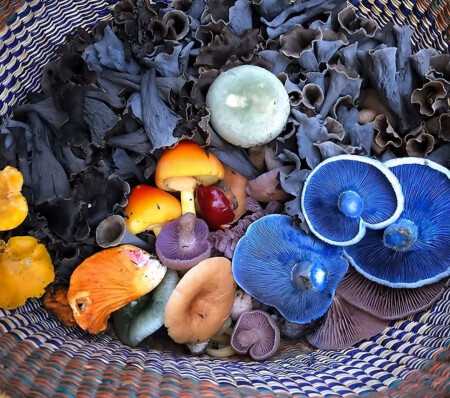
William Dunkerley picked this wide assortment of edible mushrooms after just a 1/2 hour walk behind his house. Chanterelles, black trumpets and lactarius indigo (or indigo milk cap), among several others, paint a bright kaleidoscope of colors.
Milligan attributes this rise in popularity to people like him who go “open source” to share and educate others on growing mushrooms, rather than keep the process under wraps. Milligan helps young farmers cultivate mushrooms, teaches wildlife identification, and holds Saturday night forages at his Tamworth farm for the general public.
“So many people are now into foraging. They’re like, ‘Did I find chanterelles? Did I find oysters?’ ‘Yep, here’s a neat link.’ And I’ll be like, ‘Oh yeah, Chicken of the Woods is coming up in Massachusetts. Better check my spot next week,’ ” he says.
Depending on availability, customers can buy a variety of cultivated mushrooms here, including chestnut, blue oyster, comb tooth, black pearl oyster, lion’s mane, shiitake and king oyster mushrooms. He also sells a water-soluble mushroom extract powder, mushroom coffee and tea, wellness tinctures, and dried mushrooms.
William Dunkerley, owner of Dunk’s Mushrooms Products and Foraging in Brentwood, delivers mushrooms to about 50 restaurants each week around New Hampshire and New England, including farm-to-table establishments. At his licensed food-processing facility, staff make everything from mushroom jerky using oyster and shiitake mushrooms, to mushroom tea and coffee, mushroom pot pies, lion’s mane powder, and more.
Known as the “mushroom guy,” Dunkerley grew up “off the grid” in the northern part of the state. His family foraged, preserved and canned the food they found around them.
“I grew up learning how to make cheese and preserve meats and vegetables and dehydrate stuff,” Dunkerley says.
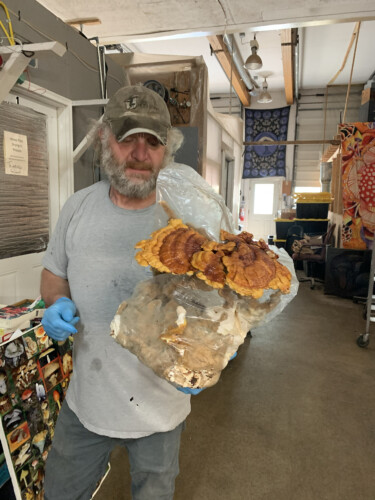
Eric Milligan, owner of New Hampshire Mushroom Company in Tamworth, holds up a reishi mushroom grown from wood substrate.
After he was taught about wild mushrooms in his 30s, he, in turn, educated them about wild edibles like nuts, shoots, berries and roots. The more he learned, the more he became hooked on the vast subject of mushrooms.
“I ended up going down the rabbit hole, and it just became the number one interest in my life. Any mushroom I saw, it was my mission to identify it,” Dunkerley says.
About 11 years ago he found an edible mushroom that was rare to New Hampshire — Sparassis spathulata, a white to light brown mushroom that grows at the base of dead or dying trees and stumps. With its loosely gathered rosettes, Sparassis is sometimes known as cauliflower mushroom and is a delicacy.
Milligan bought Dunkerley’s Sparassis, thus beginning a working relationship between the two suppliers. Dunkerley has grown about 15 to 20 different species, and right now has about seven or eight, including chaga, reishi, two species of blue oyster, chestnut and lion’s mane. He has also collaborated with local businesses, including Loon Chocolate in Manchester, to produce two types of dark chocolate — one with chaga, a medicinal (but not psychedelic) mushroom that’s shown to have health benefits; and another with lion’s mane, which can help cognitive health.
Both mycophiles say mushrooms’ popularity has multiplied recently.
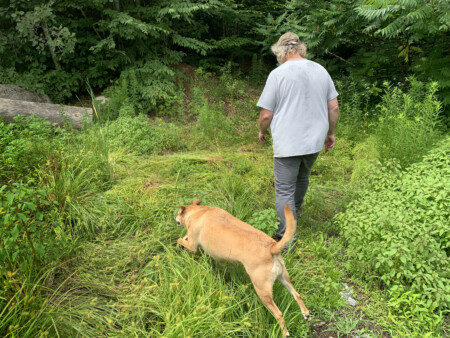
Eric Milligan, owner of New Hampshire Mushroom Company, forages for mushrooms with his dog in the woods behind the property in Tamworth.
“Right now, mushrooms are having a moment,” Dunkerley says. “The difference from 10 years ago is insane. The general public knows what lion’s mane is. Two years ago, that was not the case. (People are) finding out that mushrooms are more than just button mushrooms and portobellos.”
The effects of social media and TV advertising are also pushing the possibilities of various edible fungi, but consumers should always exercise caution. Some, like the destroying angel or death cap mushrooms, are extremely toxic; others are simply harmless. Dunkerley and Milligan have both extensively studied fungi and can accurately identify what’s growing in the wilds of New Hampshire.
Milligan says reishi, “the mushroom of immortality,” helps immune and respiratory systems, while lion’s mane is great for brain health, and turkey tail may help with some kinds of cancer. But neither forager guarantees anything. Dunkerley advises people to always read the label and make sure that the product containing mushroom states it is “100 percent fruiting body.”
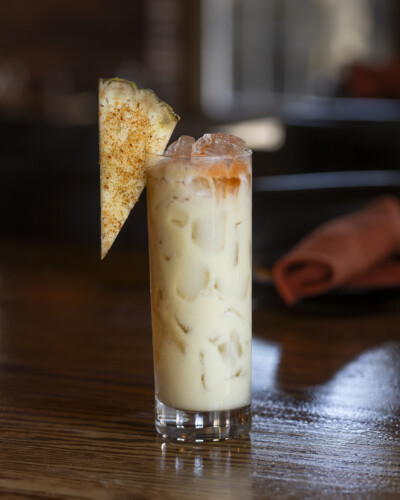
Dunk’s Rye Tai
By Beverage Director Zach Stavnezer, at The Foundry, Manchester. Made with Dunk’s Mushrooms
2 ounces mushroom-infused rye whiskey
3/4 ounce orgeat
3/4 ounce pineapple juice
1/2 ounce lemon juice
4 dashes angostura bitters
4 dashes black walnut bitters
In the world of mushrooms, knowledge is key.
“Most people don’t even really know what a mushroom is. It’s just a reproductive mechanism of something you can’t see, and that’s mycelium. So when you see a mushroom on a tree, there is mycelium that’s already colonizing that tree, decomposing it. The fungal kingdom is actually larger than the plant kingdom. There are more species of mushrooms than there are plants,” Dunkerley says.
“We should have been learning about fungi and how mushrooms interact in our daily lives, when we were learning like, ‘that’s the ground and those are clouds,’ ” Milligan adds.
Amid this mushroom awakening is a chance for people to relearn what they thought they knew about the many-faceted fungus, especially when it comes to cooking with them.
“A lot of people will say, ‘I don’t like mushrooms,’ and the next thing out of their mouth is, ‘it’s a texture thing.’ That’s just because they don’t have mushrooms that are cooked correctly,” Dunkerley says. “I don’t like mushrooms if they’re rubbery or slimy either, and I don’t particularly like button mushrooms and portobellos.”
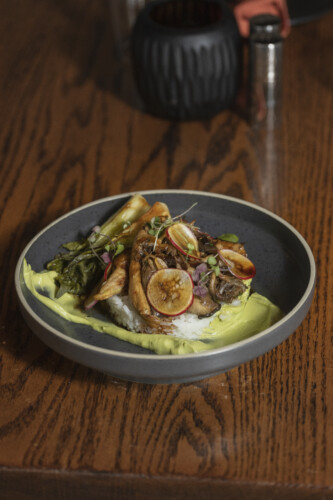
Executive Chef Vincent Venice at The Foundry offers Dunk’s Roasted Mushroom Bowl, which is made with roasted oyster, maitake, shiitake, king oyster, hen of the woods and cremini mushrooms, served over an avocado puree and jasmine rice.
It’s common to sauté mushrooms or toss some in a salad, but Dunkerley say they’re much more versatile than that. Once the mushroom is mixed with other ingredients, its taste can change dramatically.
“It can create a whole new flavor, like an umami flavor. When you turn a mushroom into powder, it can take on different flavors, and usually not what you expect. It’s usually not, ‘oh, that’s mushroomy.’ It’s more like an umami flavor or a cheesy flavor.”
Dunkerley has even made sweet dishes using mushrooms.
“We do desserts at our dinners all the time with a ton of mushroom powders. We might use four different types of lion’s mane powder in the whipped cream, chestnut powder in the crust,” Dunkerley says.
“Mushrooms are so personal. You can use them in so many different ways, and you can pair them with almost anything.”
